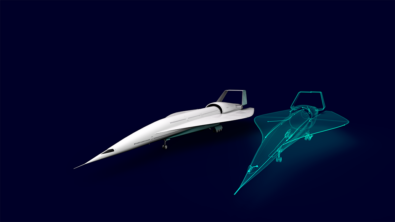A Forward Look on AI in Aerospace Part Two – Summary

Artificial intelligence (AI) has undergone rapid development in the past few years, presenting itself as a catalyst in transforming the way work is done. Engineering workflows are not an exception to this, as AI offers numerous ways to automate mundane tasks and reduce engineers’ workloads to help them focus on critical, higher-level work. This would be a boon for the aerospace and defense (A&D) industry as it embarks on multiple exciting ventures in the near future.
In this episode of the Talking Aerospace Today podcast, Todd Tuthill, Vice President of A&D for Siemens Digital Industries Software, is joined again by Barclay Brown, Ph.D., ESEP, Associate Director for AI Research for Collins Aerospace and leader for the AI Systems Working Group at INCOSE. They continue their forward look on AI in the A&D industry from the previous episode, discussing how AI could help the industry achieve its goals and transform aerospace engineering, as well as addressing what would need to change to receive the full return on investment from AI.
Exciting horizons
There is no doubt the A&D industry is going through with some of the most exciting engineering programs in the world. Every sector is experiencing terrific innovation, from researching sustainable aviation propulsion for commercial to returning to the Moon and eventually planting humans on Mars for space. With such important endeavors, companies will want to make sure they are successful to the best possible degree.
AI can be a critical tool in that regard. While it would not necessarily invent new technologies for the industry to use—that job will remain the responsibility of human engineers and their creativity—it can give engineers new ways to interact with their tools and help them reach these innovations faster.
The transformation of engineering
According to Todd and Barclay, AI can transform how engineers perform their work in a number of ways. In addition to automating mundane tasks as previous episodes delved into, tools are being developed to allow engineers to communicate with AI assistants such as chatbots with just natural language, having the designs done automatically without touching a keyboard and mouse.
This in turn can enable even more collaborative methods of engineering, such as through the industrial metaverse. People from around the world could meet in augmented or virtual reality and interact with a representative model of their design in front of them rather than on a screen, having the model conform to their spoken requests. Of course, these capabilities will not be available for some time, but every innovation in AI brings them closer to reality.
Approaching data differently
To reach these milestones, however, engineers and companies may need to change how they approach software and data. Back then, software was seen as something separate from traditional engineering; if something software-related needed to be handled, people would call IT. Now, however, the boundaries between hardware and software are blurring more and more, and engineers must learn to be more receptive and conversant with software and digital tools.
Additionally, Barclay says companies need to get better at sharing data more effectively within themselves and enable their engineers to better access and retrieve it. There is certainly room for need-to-know sentiments where data is not shared with people unless absolutely necessary, but these must be balanced with the need to share things so an enterprise can treat data as its own asset and not hide it away from its own engineers. AI is great at giving engineers access to data they need, but if a company’s mentality is focused on keeping data closed off, implementing AI will be more difficult.
Toward the world of tomorrow
The capabilities described in these past two episodes are still a long ways away, and will require a lot of time, resources, and changes to achieve. That does not mean approaching those goals is not worth it. In fact, if the A&D industry opens itself to AI and dedicates the right amount of investment, it may find AI to be the key unlocking all the amazing things it wants to accomplish, entering an age when the sky is no longer the limit.
Learn more about AI and digital transformation in aerospace on the Talking Aerospace Today podcast.
Siemens Digital Industries Software helps organizations of all sizes digitally transform using software, hardware and services from the Siemens Xcelerator business platform. Siemens’ software and the comprehensive digital twin enable companies to optimize their design, engineering and manufacturing processes to turn today’s ideas into the sustainable products of the future. From chips to entire systems, from product to process, across all industries. Siemens Digital Industries Software – Accelerating transformation.


